Alerts & Alert Escalation Workflows - User Documentation
Home ► Quick Access ► Alerts & Alert Escalation Workflows
Alerts & Alert Escalation Workflows
Overview
A common use of Workflows is to automate notifications of alerts. These can be utilised so that managers do not need to be constantly looking at the right screen in order to determine whether certain thresholds have been met. The Omni Intelligence (OI) online platform provides a User Interface so users can easily and accessibly set up these workflows.
Instructions
1. Workflows Alert Mapper
Create an Alert condition. This will be used to detect whether certain parameters are within/outside of specified margins, and can be used to trigger a Workflow.
Click here for further information.
2. Workflow Alert Escalation
Create a workflow that reacts when the alert condition is triggered. In this section, you will learn about how to set up a Workflow for your Alert, and how to schedule the alert to operate under specified work hours.
Click here for further information.
3. Workflow Components
Create the logic to the workflow using various components. In this section, you will learn about Logic Operators, Primary Nodes, and InCall Nodes, and how these components can be combined to create a logical Workflow.
Click here for further information.
4. Audit Trail
Every time an Alert is escalated, a detailed log is produced which can be accessed via the Audit Trail. This can be used to review the details of the Workflows which were escalated from an Alert.
Click here for further information.
Workflow Alert Example
To demonstrate the complexity and scale that these Alerts and Alert Escalation Workflows have when integrated into an organisational structure, consider the example below:
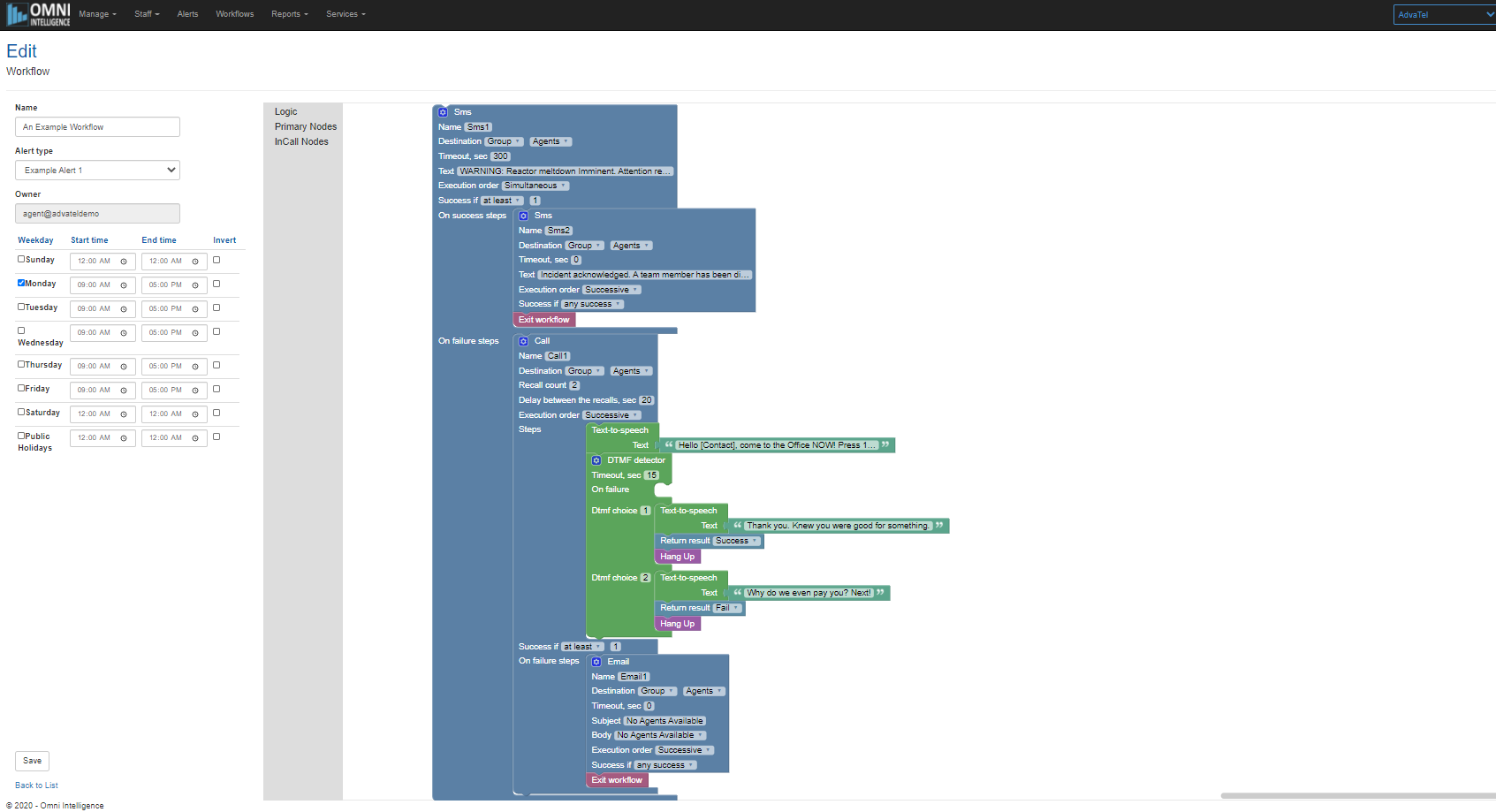
In this example workflow, if Example Alert 1 were to be triggered for whatever reason on a Monday between 9am-5pm, the Workflow sequence will be run.
An SMS reading "WARNING: Reactor meltdown Imminent. Attention required immediately!" will be sent to everyone in the Group 'Agents' simultaneously. This will be repeated every 5 minutes (300 seconds) until a success has been achieved, that is, if at least 1 agent accepts the task.
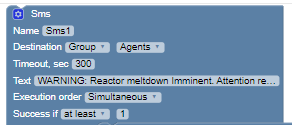
On success, an SMS reading "Incident acknowledged. A team member has been dispatched." will be sent to everyone in the same group.
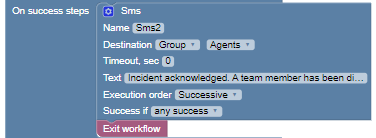
However, if nobody has responded to the SMS, automated calls (via Text-to-Speech) will be made to agents in the group. Suppose the Group of Agents consists of Adam, Bethany and Carlos. Since the Execution order is 'Successive', Adam will be called first with a robotic caller saying "Hello [Adam], come to the Office NOW! Press 1 if you can come here, or Press 2 to end your career." His phone will then detect his input using Dual-Tone Multi-Frequency (DTMF) signalling based on the number he presses.
If Adam presses 1, he will hear "Thank you. Knew you were good for something." and a success will be returned, so the Group of Agents will be notified that the incident has been acknowledged. If Adam presses 2, he will hear "Why do we even pay you? Next!" and a failure will be returned, repeating the same call with Bethany after a 20-second delay. If the process fails with Bethany as well, the call will move onto Carlos. After that, it will begin the loop again with Adam, just to check if he really values his career, recalling the entire group two more times before giving up.
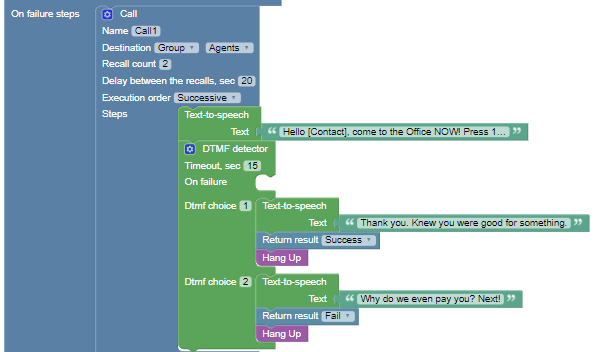
Afterwards, if no agent has responded, an Email using the template 'No Agents Available' will be sent to everyone in the group of agents simultaneously.
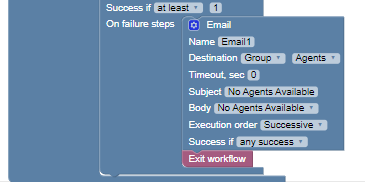
Related
Realtime Fields
Any realtime fields and their combinations can be used as alert attributes. For a full list of realtime fields, click here.
Alert Thresholds
Additional alert parameters can be configured (Optional). Click here for further details.
Email Templates
Before they can be implemented into a workflow, an email template must first be created. Information on managing email templates can be found here.
Link Templates
Before they can be implemented into a workflow, a link template must first be created. Information on managing link templates can be found here.
